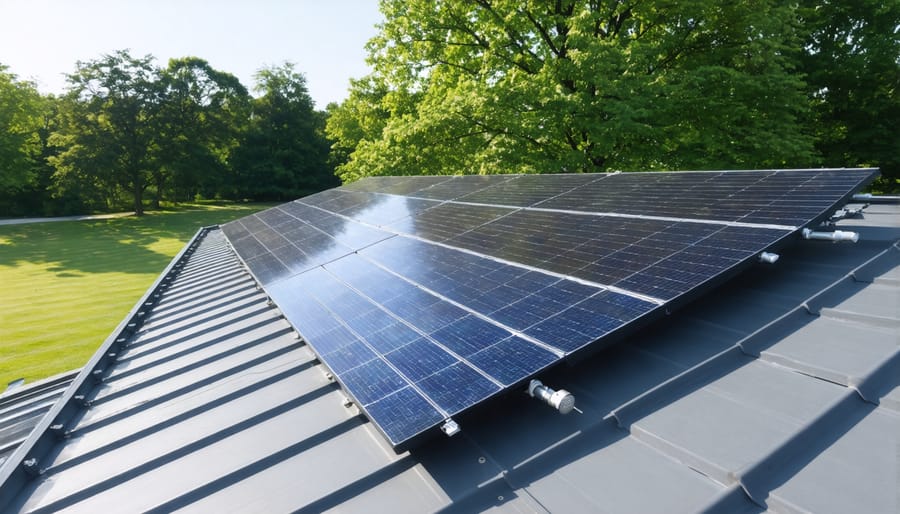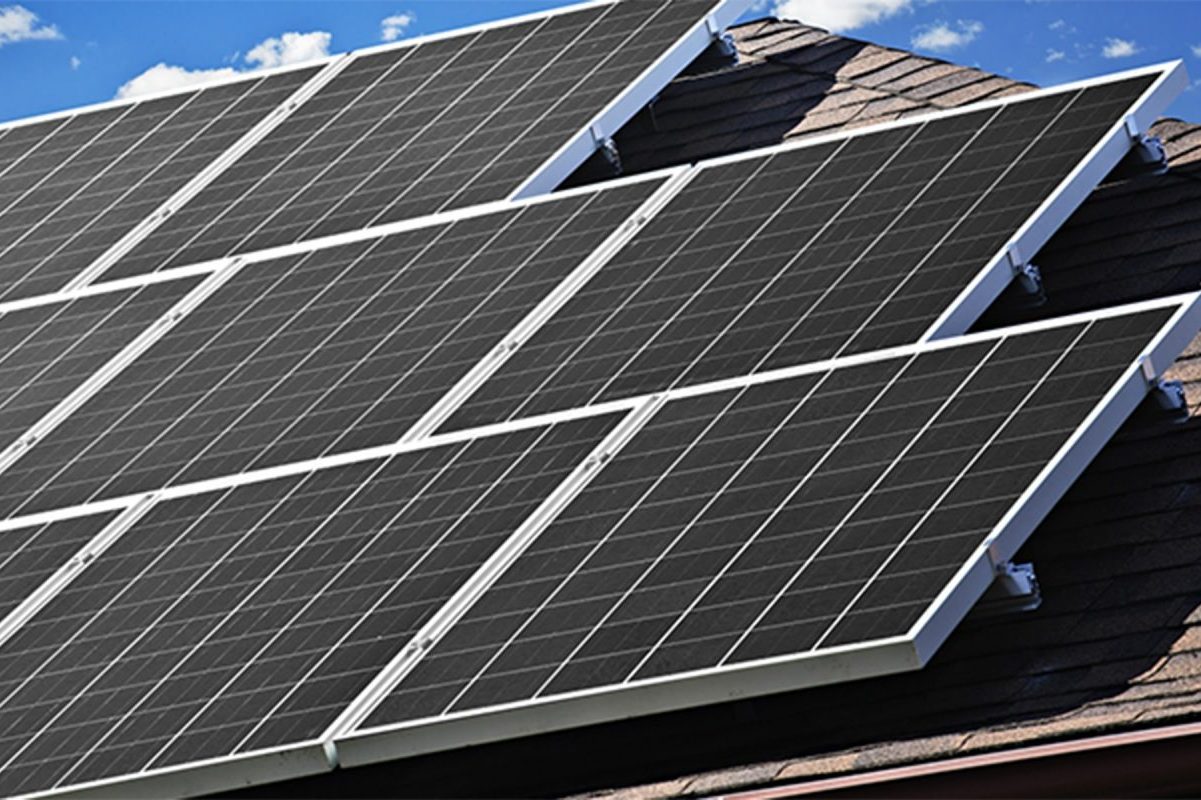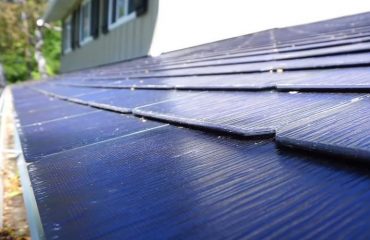Discover how solar panels are revolutionizing the way we power our homes while protecting the environment. With their ability to harness clean, renewable energy from the sun, solar panels offer a sustainable alternative to traditional fossil fuels. By generating electricity without emitting greenhouse gases or pollutants, they significantly reduce our carbon footprint and combat climate change. Moreover, the materials used in solar panel production are increasingly eco-friendly, with recycling programs in place to minimize waste. While some may question the environmental pros and cons of solar energy, the benefits far outweigh any concerns. As technology advances and costs decrease, solar panels are becoming more accessible to homeowners, empowering them to make a positive impact on the environment while saving on energy bills. Embracing solar power is not just a smart financial decision; it’s a commitment to a greener, more sustainable future for generations to come.

How Solar Panels Reduce Your Carbon Footprint
Cutting CO2 Emissions
The average residential solar panel system can prevent a significant amount of carbon dioxide from entering the atmosphere each year. According to the U.S. Energy Information Administration, a typical 5-kilowatt solar panel system can offset approximately 4.7 metric tons of CO2 emissions annually. This is equivalent to planting around 120 trees or driving 11,500 fewer miles in a car each year. By generating clean, renewable energy, solar panels help reduce reliance on fossil fuels, which are the primary contributors to greenhouse gas emissions. As more homeowners adopt solar energy, the cumulative impact on reducing CO2 emissions becomes even greater. Studies have shown that how green solar panels are directly correlates with their ability to mitigate climate change by cutting carbon dioxide emissions. Investing in solar panels not only benefits individual households but also contributes to a cleaner, more sustainable environment for future generations.
Reducing Fossil Fuel Dependence
Solar energy is a clean, renewable alternative to fossil fuels like coal, oil, and natural gas. By harnessing the sun’s power, solar panels reduce our reliance on these finite, polluting resources. Burning fossil fuels releases greenhouse gases that contribute to climate change, as well as harmful pollutants that impact air quality and public health. In contrast, solar panels generate electricity without any emissions, helping to mitigate these negative effects. As more households adopt solar power, the demand for fossil fuels decreases, leading to a more sustainable energy mix. Furthermore, solar energy helps conserve water, as traditional power plants consume vast amounts of water for cooling. By reducing fossil fuel dependence, solar panels offer a viable solution for a cleaner, healthier environment and a more stable climate for future generations.

The Sustainable Materials Used in Solar Panels
Silicon Cells
Silicon, the primary material used in solar cells, is one of the most abundant elements on Earth, second only to oxygen. This means that solar panels are not only environmentally friendly in their operation but also in their production. The silicon used in solar cells is typically sourced from sand, which is widely available and does not require destructive mining practices. Furthermore, silicon is highly recyclable, allowing solar panels to be repurposed at the end of their lifespan. When a solar panel reaches the end of its useful life, typically after 25-30 years, the silicon can be extracted and used to create new solar cells or other silicon-based products. This closed-loop system minimizes waste and ensures that the environmental impact of solar panels remains low throughout their entire life cycle. By choosing solar energy, homeowners can feel confident that they are supporting a sustainable and environmentally responsible technology.
Aluminum and Glass Components
The aluminum frames and glass sheets used in solar panels are highly recyclable, contributing to their eco-friendly nature. Aluminum is one of the most recycled materials worldwide, with nearly 75% of all aluminum ever produced still in use today. This durable metal can be recycled indefinitely without losing its quality or properties. Similarly, glass is 100% recyclable and can be reused repeatedly to create new glass products, including solar panels. When a solar panel reaches the end of its lifespan, typically after 25-30 years, the aluminum frames and glass sheets can be easily separated and recycled. This process conserves raw materials, reduces energy consumption, and minimizes waste in landfills. By choosing solar panels with recyclable components, homeowners can feel confident that their investment in clean energy will have a positive impact on the environment, even after the panels are no longer in use.
Responsible Manufacturing Practices
Solar panel manufacturers are increasingly adopting responsible practices to minimize their environmental impact. Many companies now utilize recycled materials and implement closed-loop systems to reduce waste during production. Stringent quality control measures ensure that panels are built to last, decreasing the need for frequent replacements. Manufacturers also invest in energy-efficient equipment and renewable energy sources to power their facilities, further reducing their carbon footprint. By prioritizing sustainable production methods, the solar industry is demonstrating its commitment to environmental stewardship and setting a positive example for other sectors to follow. As a result, homeowners can feel confident that their choice to install solar panels supports a cleaner, greener future.
Solar Energy’s Positive Impact on Air and Water Quality

Cleaner Air
Solar energy plays a vital role in reducing air pollution and improving overall air quality. By harnessing the sun’s clean, renewable power, solar panels significantly decrease the reliance on fossil fuels, which are major contributors to smog, particulate matter, and other harmful air pollutants. When fossil fuels are burned to generate electricity, they release nitrogen oxides, sulfur dioxide, and other toxic substances that can trigger respiratory issues like asthma, bronchitis, and even lung cancer. In contrast, solar panels generate electricity without emitting any pollutants, effectively reducing the concentration of these dangerous substances in the air we breathe. Additionally, by decreasing the demand for fossil fuels, solar energy helps curb the release of greenhouse gases, such as carbon dioxide, which contribute to climate change and its associated health risks. While solar panels do have some hidden environmental costs, their overall impact on air quality is undeniably positive, making them a crucial tool in the fight against air pollution and respiratory health issues.
Protecting Water Resources
Solar power not only reduces carbon emissions but also helps conserve another precious resource – water. Traditional fossil fuel power plants require vast amounts of water for cooling, leading to significant water consumption and potential strain on local water resources. In contrast, solar panels generate electricity without the need for water-intensive cooling processes. By transitioning to solar energy, we can alleviate the pressure on our water supplies and ensure more sustainable management of this vital resource. Additionally, as solar panels become more widespread, the disposal and recycling challenges associated with their end-of-life management are being addressed through innovative solutions and responsible practices. Embracing solar power not only helps combat climate change but also contributes to the conservation of our water resources, ensuring a more sustainable future for generations to come.
Debunking Common Myths About Solar Panels and the Environment
Myth: Solar Panels are Made with Toxic Materials
While some solar panels may contain small amounts of hazardous materials, the vast majority of a solar panel’s composition consists of non-toxic, Earth-abundant elements. Silicon, the primary material in most solar cells, is the second most abundant element in the Earth’s crust and is non-toxic. Strict safety regulations govern the use and disposal of any potentially hazardous materials in solar panel production, ensuring minimal environmental impact. Manufacturers are also continuously developing new technologies to reduce or eliminate the use of toxic materials altogether. When properly installed and maintained, solar panels pose no significant risk to the environment or human health. In fact, the environmental benefits of solar energy far outweigh any potential concerns about the materials used in their production. By harnessing clean, renewable energy from the sun, solar panels help reduce greenhouse gas emissions, combat climate change, and contribute to a healthier planet for future generations.
Myth: Solar Panels Pose End-of-Life Disposal Issues
While some people may be concerned about the disposal of solar panels at the end of their lifespan, the reality is that the solar industry is rapidly developing recycling solutions and regulations to handle solar waste responsibly. Solar panels are primarily made of glass, aluminum, and silicon, all of which are recyclable materials. As the first wave of solar panels reaches the end of their 25-30 year lifespan, specialized recycling facilities are emerging to disassemble and recycle the various components. Governments and industry organizations are also establishing guidelines and best practices for solar panel recycling to ensure environmentally-friendly disposal. With these proactive measures in place, the myth of solar panels creating end-of-life disposal issues is quickly being dispelled. As solar adoption continues to grow, the industry is committed to developing sustainable solutions for the entire lifecycle of solar panels, from production to disposal.
In conclusion, solar panels offer a clean, renewable, and environmentally friendly alternative to traditional energy sources. By harnessing the power of the sun, solar panels reduce our reliance on fossil fuels, minimize greenhouse gas emissions, and contribute to a more sustainable future. The eco-friendly materials used in their production, combined with their long lifespan and recyclability, further demonstrate their environmental benefits. As a homeowner, making the switch to solar energy not only helps protect the environment but also offers significant financial advantages through reduced energy bills and potential tax incentives. For a more detailed overview of the process, you might find installing solar panels at home insightful. With the increasing affordability and accessibility of solar technology, now is the perfect time to consider embracing this green energy solution and join the growing movement towards a more sustainable future.









